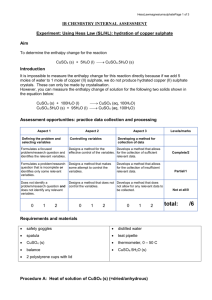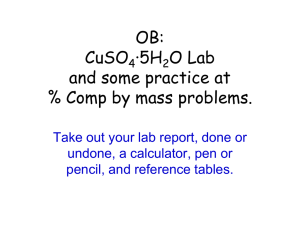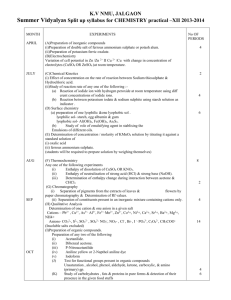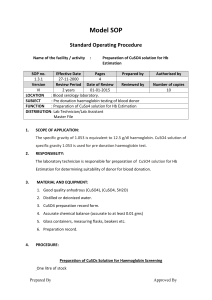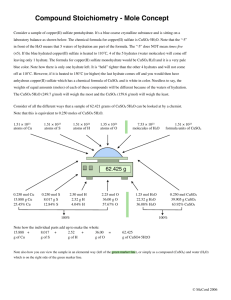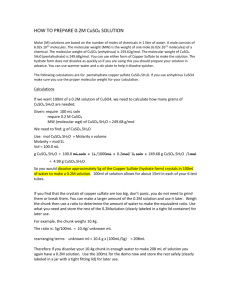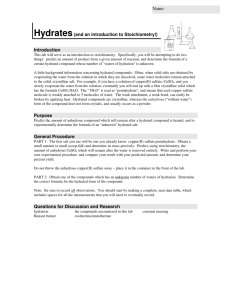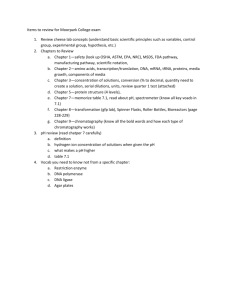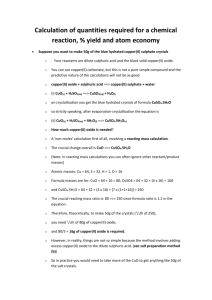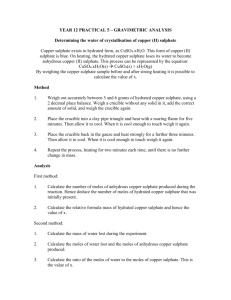Using Hess Law (SL/HL): hydration of copper sulphate
advertisement
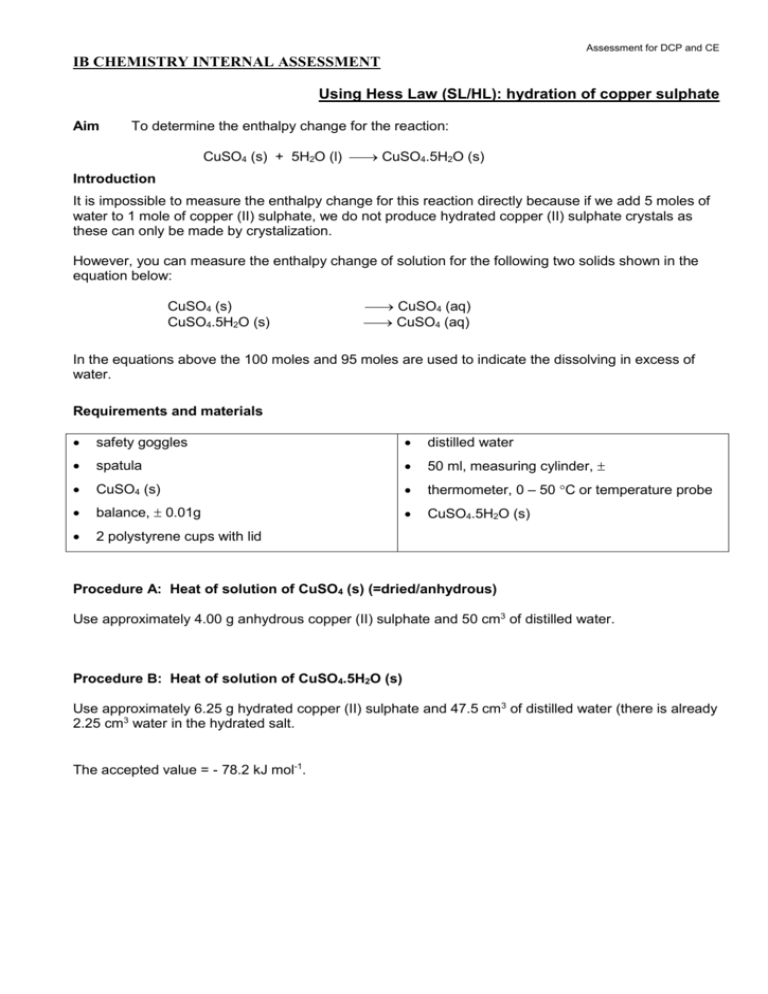
Assessment for DCP and CE IB CHEMISTRY INTERNAL ASSESSMENT Using Hess Law (SL/HL): hydration of copper sulphate Aim To determine the enthalpy change for the reaction: CuSO4 (s) + 5H2O (l) CuSO4.5H2O (s) Introduction It is impossible to measure the enthalpy change for this reaction directly because if we add 5 moles of water to 1 mole of copper (II) sulphate, we do not produce hydrated copper (II) sulphate crystals as these can only be made by crystalization. However, you can measure the enthalpy change of solution for the following two solids shown in the equation below: CuSO4 (s) CuSO4.5H2O (s) CuSO4 (aq) CuSO4 (aq) In the equations above the 100 moles and 95 moles are used to indicate the dissolving in excess of water. Requirements and materials safety goggles distilled water spatula 50 ml, measuring cylinder, CuSO4 (s) thermometer, 0 – 50 C or temperature probe balance, 0.01g CuSO4.5H2O (s) 2 polystyrene cups with lid Procedure A: Heat of solution of CuSO4 (s) (=dried/anhydrous) Use approximately 4.00 g anhydrous copper (II) sulphate and 50 cm3 of distilled water. Procedure B: Heat of solution of CuSO4.5H2O (s) Use approximately 6.25 g hydrated copper (II) sulphate and 47.5 cm3 of distilled water (there is already 2.25 cm3 water in the hydrated salt. The accepted value = - 78.2 kJ mol-1.
